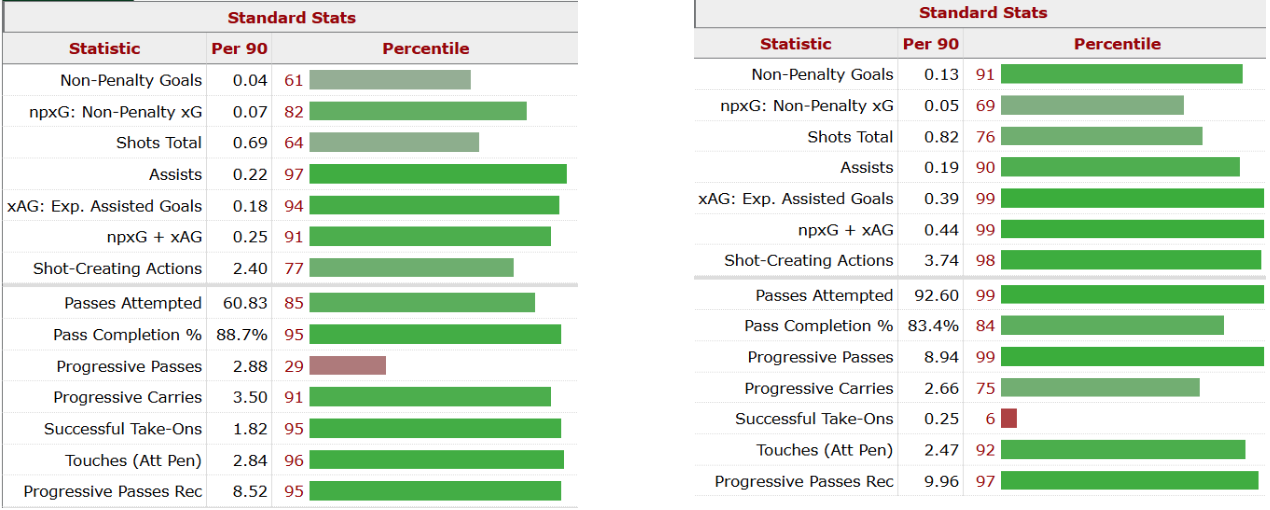Data, Roles, and Tactics: The Modern Blueprint for Football Success
Football success is often reduced to a blame game, with coaches bearing the brunt of poor form. Yet, the truth often lies deeper: in how well a team’s player profiles align with its tactical philosophy. Take PSG’s star-studded Messi-Mbappé-Neymar trio—on paper, a dream attack; on the pitch, a different story. This contrast reveals how mismatched roles and expectations can disrupt even the most talented setups.
Every fullback isn’t the same
As a Barcelona fan, I fondly remember the connection between Jordi Alba and Lionel Messi—Alba’s pinpoint crosses finding Messi’s left foot for a finish were a hallmark of Barça’s golden years. It’s easy to expect something similar from Alejandro Balde, but such comparisons miss the point.
Does Kylian Mbappé Truly Deserve the Criticism He’s Been Receiving?
Balde isn’t a traditional crosser like Alba. Instead, he excels as a ball carrier, using his pace and technical ability to drive into wide areas and disrupt the opposition’s structure. While he might occasionally surprise with a quality cross, it’s not his primary strength or role. Expecting Balde to replicate Alba’s style is both unrealistic and unnecessary.
Modern football has evolved, and fullbacks now come in various profiles: hybrid fullbacks who tuck into midfield, defensive-minded ones who prioritize transitions, or attacking fullbacks who push high and create chances. Balde belongs to a different category, tailored to Barcelona’s current needs.
Ultimately, “fullback” defines the position, but the player’s profile—dictated by their attributes and the coach’s system—determines how they perform within it. A hybrid fullback might suit Pep Guardiola’s style, while an attacking-minded one might thrive under Jurgen Klopp. The key isn’t to replicate past players but to use a fullback’s unique qualities to complement the team’s philosophy.

Balde vs Alba in 2022-23 LaLiga season [FBRef]
Evaluating a Player’s Performance
Players in the same position don’t guarantee similar outcomes because their profiles and roles within a team can vary significantly. Take Kai Havertz, for instance. Much of his Chelsea tenure was spent searching for his ideal role. Was he a goalscoring center-forward, an attacking midfielder, or something in between? This confusion highlights the importance of understanding a player’s profile, not just their position.
At Arsenal, injuries to Gabriel Jesus forced Havertz to play as a striker. While he’s not a traditional #9, his versatility allows him to drop deep or operate wide, as his touch map against PSG illustrates. Compare this to Erling Haaland, another striker, but with a vastly different role—one focused on staying central and finishing chances. These examples show that football is increasingly about roles and profiles, not just predefined positions.

Photo: BBC
This is where data comes in. Clubs with limited budgets, like Brighton and Brentford, rely heavily on data to evaluate players’ profiles and ensure their skills align with the team’s system. Metrics such as passing patterns, heat maps, and expected goals help clubs determine whether a player can fulfill a specific tactical need. Havertz’s varied touch map could indicate his suitability for a flexible system, while Haaland’s data might highlight his value as a high-output finisher.
Data allows clubs to look beyond traditional scouting and focus on finding players who fit the system, increasing the chances of success. It’s not just about talent but about putting the right profiles in the right roles.
Projects build on profiles
Football is evolving into a game where aligning player profiles with a team’s philosophy can make or break a project. Liverpool’s recent success under Arne Slot illustrates this perfectly.
Despite skepticism over the lack of new signings after Klopp’s departure, Liverpool transitioned seamlessly. Why? Slot inherited a squad built on the principles Klopp emphasized: high pressing, quick transitions, and dynamic attacks. Slot’s tweaks were minimal because the players’ profiles already aligned with this style.
This strategic alignment is no accident. Clubs like Brighton and Brentford use data to ensure they recruit players who fit their specific playing philosophy. Brighton’s ability to uncover hidden gems like Moisés Caicedo or Brentford’s recruitment of Ivan Toney showcases how data-driven decisions pay dividends. By analyzing metrics such as passing efficiency, pressing intensity, and positional versatility, these clubs find players who fit their systems, even on limited budgets.
Brentford’s ‘Moneyball’ approach hasn’t gone unnoticed given how they have survived in the Premier League despite working on such a low budget. They signed Ollie Watkins, Bryan Mbeumo, and Saïd Benrahma all of whom have turned out to be great in the Premier League.
What It Takes to Stay Up: An In-depth Look At Teams Who Have Survived in the Premier League
On the flip side, teams without such alignment often struggle. High-profile signings may falter if their profiles don’t fit the system—consider how some marquee players at PSG have underperformed despite their individual brilliance. The disconnect between a star’s profile and the team’s playing philosophy can result in underwhelming performances.
This growing focus on data and profiling isn’t just for small or mid-tier clubs; it’s a model for sustainability and success. The key takeaway? Aligning player profiles with the club’s vision minimizes risks, maximizes performance, and ensures that systems remain resilient even as managers change. With the right players backing a philosophy, success becomes a matter of execution, not chance.
By: Yashanil Tiwari / @yaks_cule
Featured Image: @GabFoligno / James Williamson – AMA / Getty Images
